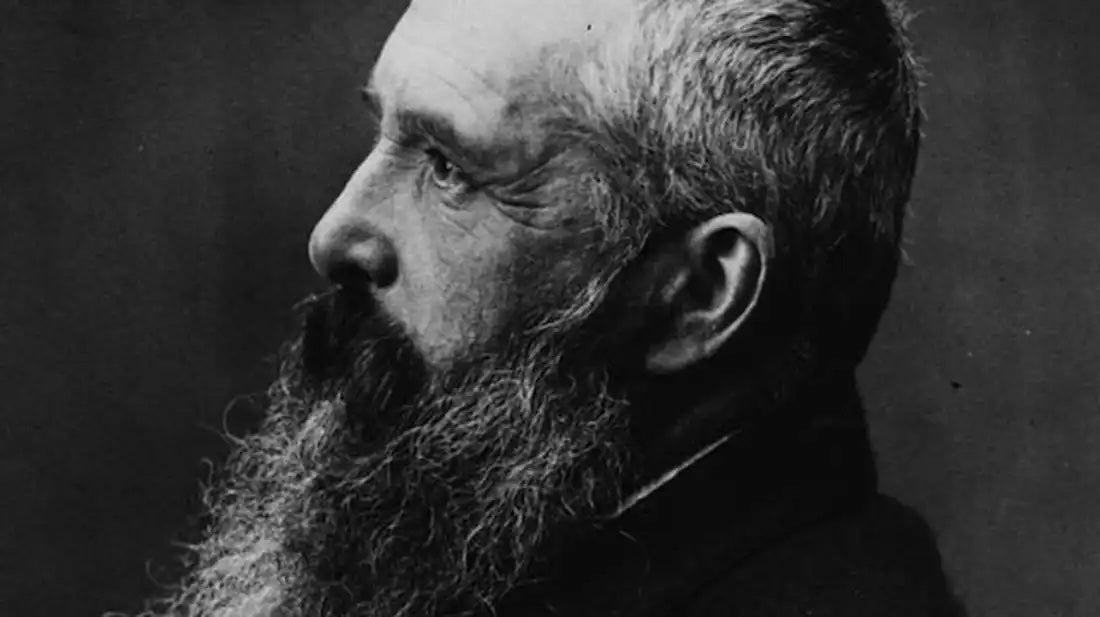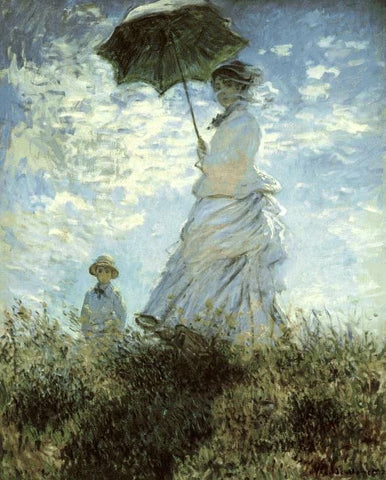
Claude Monet – The artist. The man.
Claude Monet – The artist. The man.
Claude Monet’s name is synonymous with the impressionist style of painting. Distinguishable at a glance, his technique was as unconventional as his life. The man himself was never one for “coloring inside the lines.”

Born Oscar-Claude Monet in 1840 in Paris, France, Monet took an interest in drawing at a very young age. The family moved to the Normandy region when he was five, and this is where he began to explore his artistic interests. He was not fond of school and felt confined by it. He sketched practically everything and everyone. His father was not particularly supportive of his artistic interests, but his mother was very encouraging. At the age of 16, however, his mother died. This was a crushing blow to the young Monet.
He became quite well known in the community as being a talented sketch artist. After meeting Eugene Boudin, a local artist who focused mainly on painting landscapes, his style began to evolve. This was a pivotal moment in young Monet’s development as an artist with the introduction of plein air (outdoor) painting by Boudin. This became a cornerstone of Monet’s future works.

He chose to move to Paris in 1859 to further his craft and enlisted in the Academie Suisse. Shortly thereafter, he joined the armed forces and was stationed in Algiers before being released due to medical reasons. Upon his return in 1862, Monet studied with an artist name Gleyre, who introduced him with other artists, including Renoit, Sisley and Bazille, with whom he would develop lifelong friendships. 
Developing his craft, often painting outdoors and of the setting surrounding him, his pieces were admitted into several judged art shows in Paris, gaining both popularity and criticism. It was circa 1866 that Monet began painting Camille Doncieux, who would eventually become his wife. One of his most famous paintings, Camille (also called Woman in Green), featured her, as did many other pieces over time. Doncieux and Monet became lovers and gave birth to their son, Jean, in 1867.

Monet struggled with depression throughout his life. His financial state was constantly in flux, and in 1868, he found himself in an overwhelming state of desperation. His father refused to help him and his “mistress” due to the couple’s child out of wedlock and Monet’s choice to be an artist in general, seeing both as impractical and irresponsible. Monet was so overcome by hardship that he attempted suicide by jumping in the Siene.
In 1870, he married Camille and in May 1871, he left London to live in Zaandam, where he made 25 paintings (and was suspected of revolutionary activities). He also paid a first visit to nearby Amsterdam. Later that year, he returned to France. Monet lived from December 1871 to 1878 at Argenteuil, a village on the Seine near Paris, and here he painted some of his best-known works.

He and his contemporaries continued to contribute to the artistic community at large. They showed their pieces regularly, often being met with disdain by the stuffy art society of Paris at the time. Their style of painting appeared “lazy” and incomplete. His technique was one that more accurately depicted natural light and shading, but while using very small brushes and strokes, never appeared lifelike. It was in an 1874 exhibit that the word “impressionist” was used, designed to criticize the technique and resultant works. He chose to embrace the term instead.

Monet was known for being extremely critical of his own work. In addition to his lifelong struggle with depression, it is rumored that he often flew into fits of rage in frustration over pieces that did not quite meet his expectations. Some have stated that he slashed, tore, kicked, or burned more than 500 works of art.
During this time, the family continued to move from place to place, and began sharing a home with friends Ernest and Alice Hoschede along with their six children. Both men struggled financially, and without granting Alice a divorce, Ernest abandoned his wife and children.
Camille gave birth to their second son, Michel, in 1878. Camille’s health was failing, and the pregnancy and birth of Michel took an irreparable toll on her body. Alice helped to care for her, but she succumbed to what was recorded as tuberculosis, in 1879. Monet’s piece, titled Camille on Her Deathbed, was precisely that. He was stricken with grief at her loss.
MONET, GIVERNY
Both in states of mourning, Claude and Alice moved their children to Giverny, France, eventually developing a romantic relationship. His surroundings were serene and he took solace there. The family was renting a family home situated on two acres. The property contained beautiful gardens, a pond and plenty of inspiration for his works to come.

This marks Monet’s most productive and successful period. He began turning a profit on the sale of his pieces, and eventually purchased the home and surrounding property. Ernest Hoschede passed away, and Claude and Alice married in 1892. They spent the rest of their years at the Giverny home, refurbishing it and building a proper studio. Monet was exceptionally fond of painting controlled nature: his own gardens in Giverny, with its water lilies, pond, and bridge. He also painted up and down the banks of the Seine. Alice passed away in 1911, and Claude in 1926.
Other Styles and Icons
Vincent van Gogh’s unique and instantly recognizable style continues to rise in popularity. His paintings are filled with energy, vibrancy, often using a technique of double-loading the brush so that the up- and down-stroke are different, but slightly blended. Van Gogh purposefully employed entrancing linework throughout to direct you back to the focal point.

Michelangelo Buonarroti was primarily a sculptor. His paintings would mimic the same defined outlines, capturing a sculptural essence. One of the greatest paintings ever created was by him, and not on a canvas; its found on the ceiling of the Sistine Chapel. Michelangelo masterfully used a fresco technique by painting into wet plaster. He worked feverishly moving from section to section to prevent the plaster from drying. His work is an amazing feat…
 Rembrandt Van Rijn’s technique was called “chiaroscuro.” This too is an Italian term that means “the dark and the light.” Rembrandt started with a dark base, and then added light, often creating dramatic results.
Rembrandt Van Rijn’s technique was called “chiaroscuro.” This too is an Italian term that means “the dark and the light.” Rembrandt started with a dark base, and then added light, often creating dramatic results.

When it comes to art, everyone has their own taste and level of appreciation for certain mediums, styles, techniques and artists. Whether a fan of modern or classic, realism, abstract, surrealism, impressionism, etc. We admire these masters and seek to interpret their vision. So many artists are misunderstood and gravely undervalued until well past their deaths. We find inspiration in their individualism, dedication to their craft, drive for perfection and absolute passion.
Join us. Be a TENLEGEND.™